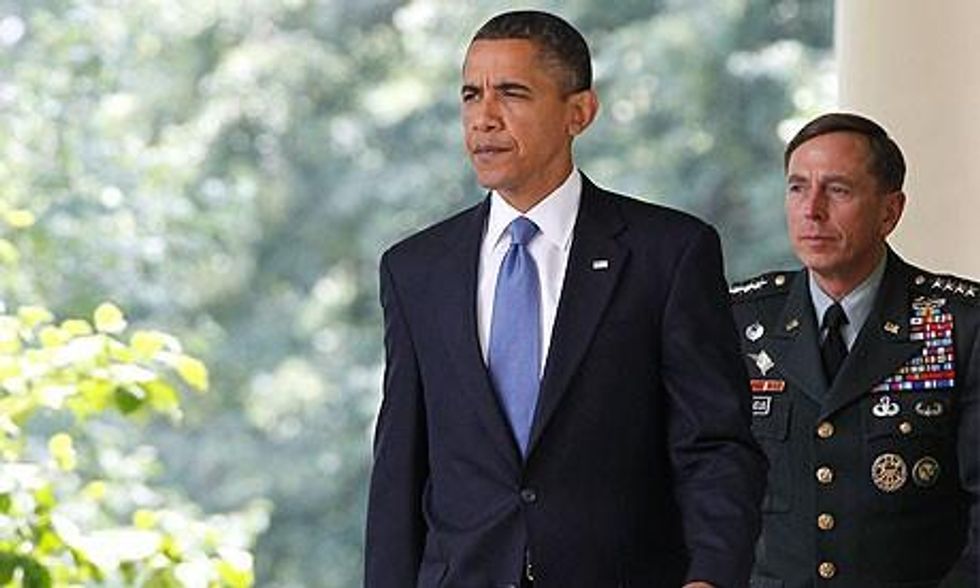A story in last week's New York Times painted a remarkably detailed picture of the US government's so-called "targeted killing" campaign, a campaign that involves the use of unmanned aerial vehicles (drones) to kill suspected insurgents and terrorists and, it turns out, many, many others, as well. The story, written by Jo Becker and Scott Shane, discussed the CIA's choice of munitions, its efforts to avoid civilian casualties, and its method for calculating the number of civilians killed in any given strike. The story also underscored the extent to which President Obama himself is involved in overseeing the campaign - and even in selecting its targets.
The story has already received a great deal of coverage, but two aspects of it deserve more attention.
The first has to do with the targeted killing campaign itself. Long before the New York Times story was published, human rights organizations questioned the campaign's lawfulness. At the ACLU, we sued (pdf) over elements of the campaign two years ago, contending that the US government's then-proposed (and now-realized) killing of Anwar al-Awlaki in Yemen would violate both international law and the US constitution.
But the New York Times story suggests the legal foundation of the targeted killing campaign is not simply shaky, but rotten. One problem is that the US government appears to take a very broad view of who can be targeted. At one point, officials at the State Department complained to the White House that the CIA seemed to believe that any group of "three guys doing jumping jacks" was a terrorist training camp.
Another problem, and perhaps an even deeper one, is in the government's approach towards individuals who are not targeted - not in the conventional sense of the word, anyway. According to the New York Times, the government "counts all military-age males in a strike zone as combatants ... unless there is explicit intelligence posthumously proving them innocent".
"The government has an obligation under international law to distinguish combatants from noncombatants - and, as far as reasonably possible, to avoid causing noncombatants harm. Direct targeting of noncombatants is a war crime; indeed, it is the prototypical one. It surely need not be explained that the government's obligation is to distinguish combatants from noncombatants while they are still alive, not after they have been killed. A 'shoot first, ask questions later' policy is entirely inconsistent with international law, not to mention morally grotesque."
If this is true, it is astounding. The government has an obligation under international law to distinguish combatants from noncombatants - and, as far as reasonably possible, to avoid causing noncombatants harm. Direct targeting of noncombatants is a war crime; indeed, it is the prototypical one. It surely need not be explained that the government's obligation is to distinguish combatants from noncombatants while they are still alive, not after they have been killed. A "shoot first, ask questions later" policy is entirely inconsistent with international law, not to mention morally grotesque.
The other aspect of the New York Times story that warrants more attention has to do with the way the story was assembled. Becker and Shane report that they interviewed "three dozen" of President Obama's current and former advisors. These advisors supplied them with granular detail about deliberations inside the White House, quoted (or paraphrased) conversations between the president and senior officials, and discussed tensions between various agencies - most notably, the State Department and the CIA.
That the advisors were so forthcoming would be remarkable in any circumstances, but it is particularly remarkable here because the US government's official position - a position it has set out in legal briefs and sworn affidavits (pdf) - is that the CIA's targeted killing campaign is a state secret. Indeed, the CIA's position in court is that the agency's mere acknowledgement of the campaign would cause grave and irreparable injury to the nation's security.
The truth, of course, is that the CIA has already acknowledged the campaign, and that dozens of government officials have spoken about it to Jo Becker and Scott Shane and many other reporters besides. The CIA's litigation position is not intended to protect the "secrecy" of the agency's killing program, but to protect the agency's ability to disclose only the information that it wants to disclose - information that invariably paints the CIA's practices as closely supervised, supremely effective, and absolutely necessary.
Later this month, in response to Freedom of Information Act lawsuits, the CIA will have to file a legal brief explaining to a court in New York why it should be permitted to eschew real transparency about the targeted killing program, while simultaneously carrying on its propagandistic campaign of officially sanctioned leaks. Notably, the Freedom of Information Act was meant to foreclose precisely this kind of official duplicity. Almost half a century ago, Republican lawmakers championed the act in the hope of curbing the "selective disclosures, managed news, half-truths, and admitted distortions" that had come to characterize official statements about the war in Vietnam and Cambodia. The act, they said, would "help to blaze a trail of truthfulness and accurate disclosure in what has become a jungle of falsification, unjustified secrecy, and misstatement by statistic".
Whether a court will compel the CIA to retire the increasingly untenable fiction that the targeted killing program is a secret remains to be seen. There is no doubt, though, that selective disclosures - and selective secrecy - about the program has distorted public debate. Last week's New York Times article serves as a reminder that our public debate about the government's bureaucratized killing program is based almost entirely on the government's own selective, self-serving, and unverifiable representations about it.
This surely puts far too much power in the hands of the CIA, and too little in the hands of ordinary citizens.


